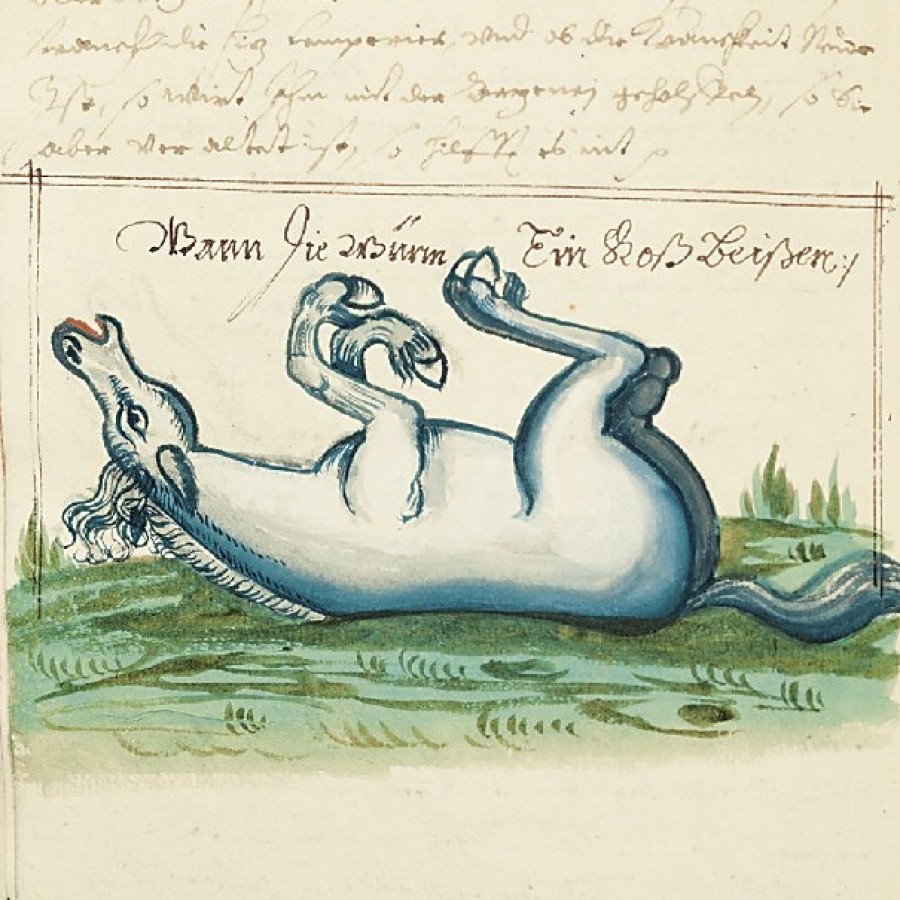

Colic is a word that strikes fear into the heart of any horse owner. And rightly so, as it remains the number one killer of horses today.
Virtually any horse is susceptible to colic, with age, sex and breed differences seeming to make little difference predisposing a horse to this condition.
What is Colic?
Colic is the term which describes a combination of signs which alert us to abdominal pain in the horse. Colic can range from mild to severe but should never be ignored, as a mild case can become severe and life threatening in time.
Signs of Colic
A major problem as an owner is to identify the signs of colic. That is because the signs can vary greatly between individuals and may depend on the severity of the pain. However, among the more common signs are:
- turning the head towards the flank
- pawing the ground
- kicking or biting at abdomen
- stretching out as if to urinate without doing so
- repeatedly lying down and getting up or attempting to do so
- rolling, especially violent rolling
- sitting in a dog-like position, or lying on the back
- lack of appetite
- putting head down to water, without drinking
- change in nature of droppings
- change in normal digestive sounds
- bloating of the abdomen
- sweating
- rapid respiration
- elevated heart rate
- change in mucous membrane colour and capillary refill time
- depression
- cool extremities
If you see signs of colic, it is important to contact your vet immediately.
Preventing Colic
Whilst horses are predisposed to colic due to the anatomy and physiology of their digestive tracts (eg they cannot vomit), you can do a lot to minimise the risk of colic. Although not every case is avoidable, the following guidelines can maximise your horse's health and reduce the risk of colic:
- Establish a set daily routine - including feeding and exercise schedules - and stick to it.
- Feed a high quality diet comprised primarily of roughage
- Avoid feeding excessive grain and energy dense concentrates or mixed feeds. Dilute these feeds with chaff if necessary.
- Dilute daily concentrate rations into two or three smaller feedings rather than one larger one to avoid overloading the horse's digestive tract. Hay is best fed free choice.
- Set up a regular parasite control program with the help of your equine practitioner. Utilise faecal samples to determine its effectiveness.
- Provide exercise and turn out into a paddock on a daily basis
- Change the intensity/duration of an exercise program gradually
- Provide clean, fresh water at all times (the only exception is when the horse is excessively hot - then it should be given small sips of water until it has recovered)
- Avoid medications unless they are prescribed by your vet, especially pain relief drugs (analgesics) which can cause ulcers.
- Check hay, bedding, pasture and environment for potentially toxic substances, such as moulds, noxious weeds and ingestible foreign matter.
- Avoid putting feed on the ground, especially in sandy soils.
- Make dietary and other management changes as gradual as possible. Change over a period of 7-14 days.
- Reduce stress. Horses experiencing changes in environment or workloads are at high risk of intestinal dysfunction.
- Pay special attention to horses when transporting them or changing their environment, such as shows.
- Observe foaling mares pre- and post-partum for any signs of colic. Also, watch carefully any horses that have had a previous bout of colic. They may be at greater risk.
- Maintain accurate records of management, feeding practices, and health.
